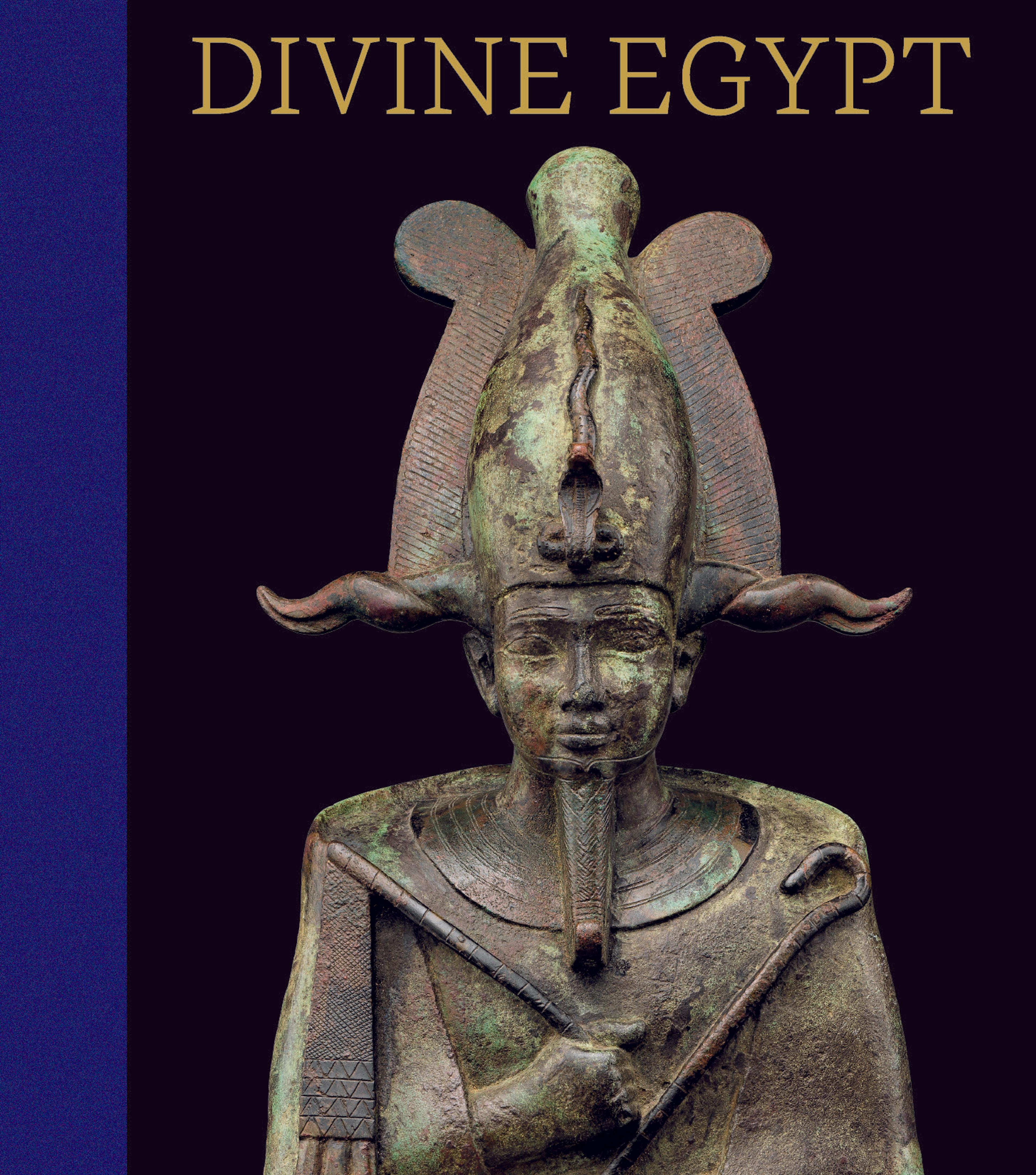English
Statuette of Amun
The god Amun ("the hidden one") first came into prominence at the beginning of the Middle Kingdom. From the New Kingdom onward, Amun was arguably the most important god in the Egyptian pantheon. As a creator god, Amun is most often identified as Amun-Re (in the typical Egyptian blending of deities, Amun is combined with the main solar deity, Re). His main sanctuary was the immense temple complex at Karnak on the east bank of the Nile at the southern edge of modern Luxor.
In this small figure Amun stands in the traditional pose with the left leg forward. He is identified by his characteristic flat-topped crown, which originally supported two tall gold feathers, now missing. He wears the gods' braided beard with a curled tip and carries an ankh emblem in his left hand and a scimitar across his chest. On pylons and temple walls of the New Kingdom, Amun-Re is often depicted presenting a scimitar to the king, thus conferring on him military victory.
This statuette, cast in solid gold, is an extremely rare example of the statuary made of precious materials that, according to ancient descriptions, filled the sanctuaries of temples. The figure could have been mounted on top of a ceremonial scepter or standard. There are traces of a tripartite loop on the top of Amun’s cap, which indicates that he could be suspended and, as such, perhaps was worn by a temple celebrant or by a statue of a deity. For the Egyptians, the color of gold and the sheen of its surface were associated with the sun, and the skin of gods was supposed to be made of gold.
The soft modeling of the torso, the narrow waist, and other features are typical of the art of the Third Intermediate period. This era marks the political decline of centralized power in Egypt, but it is also a period of great artistic achievement. Works in metal (gold, silver, and, above all, bronze) were of especially fine quality, and the Museum's statuette of Amun testifies to the excellence typical of the period.
In this small figure Amun stands in the traditional pose with the left leg forward. He is identified by his characteristic flat-topped crown, which originally supported two tall gold feathers, now missing. He wears the gods' braided beard with a curled tip and carries an ankh emblem in his left hand and a scimitar across his chest. On pylons and temple walls of the New Kingdom, Amun-Re is often depicted presenting a scimitar to the king, thus conferring on him military victory.
This statuette, cast in solid gold, is an extremely rare example of the statuary made of precious materials that, according to ancient descriptions, filled the sanctuaries of temples. The figure could have been mounted on top of a ceremonial scepter or standard. There are traces of a tripartite loop on the top of Amun’s cap, which indicates that he could be suspended and, as such, perhaps was worn by a temple celebrant or by a statue of a deity. For the Egyptians, the color of gold and the sheen of its surface were associated with the sun, and the skin of gods was supposed to be made of gold.
The soft modeling of the torso, the narrow waist, and other features are typical of the art of the Third Intermediate period. This era marks the political decline of centralized power in Egypt, but it is also a period of great artistic achievement. Works in metal (gold, silver, and, above all, bronze) were of especially fine quality, and the Museum's statuette of Amun testifies to the excellence typical of the period.
Artwork Details
- Title: Statuette of Amun
- Period: Third Intermediate Period
- Dynasty: Dynasty 22
- Date: ca. 945–712 BCE
- Geography: From Egypt; Possibly from Upper Egypt, Thebes, Karnak
- Medium: Gold
- Dimensions: H. 17.5 × W. 4.7 × D. 5.8 cm, 0.9 kg (6 7/8 × 1 7/8 × 2 1/4 in, 2 lbs)
- Credit Line: Purchase, Edward S. Harkness Gift, 1926
- Object Number: 26.7.1412
- Curatorial Department: Egyptian Art
Audio
3480. Statuette of Amun
0:00
0:00
We're sorry, the transcript for this audio track is not available at this time. Please email info@metmuseum.org to request a transcript for this track.
More Artwork
Research Resources
The Met provides unparalleled resources for research and welcomes an international community of students and scholars. The Met's Open Access API is where creators and researchers can connect to the The Met collection. Open Access data and public domain images are available for unrestricted commercial and noncommercial use without permission or fee.
To request images under copyright and other restrictions, please use this Image Request form.
Feedback
We continue to research and examine historical and cultural context for objects in The Met collection. If you have comments or questions about this object record, please contact us using the form below. The Museum looks forward to receiving your comments.
